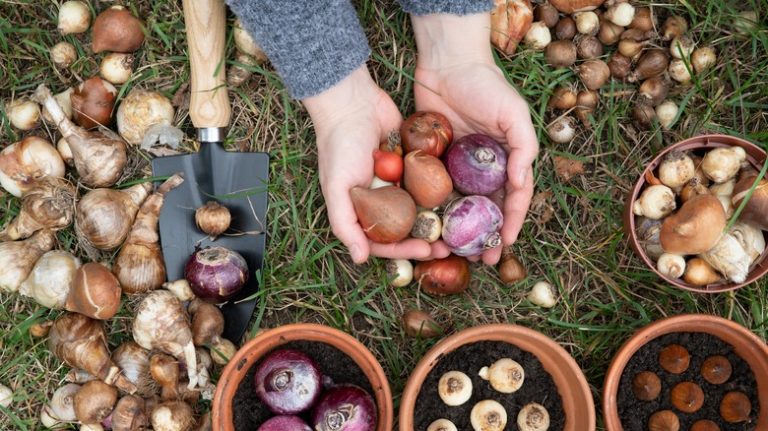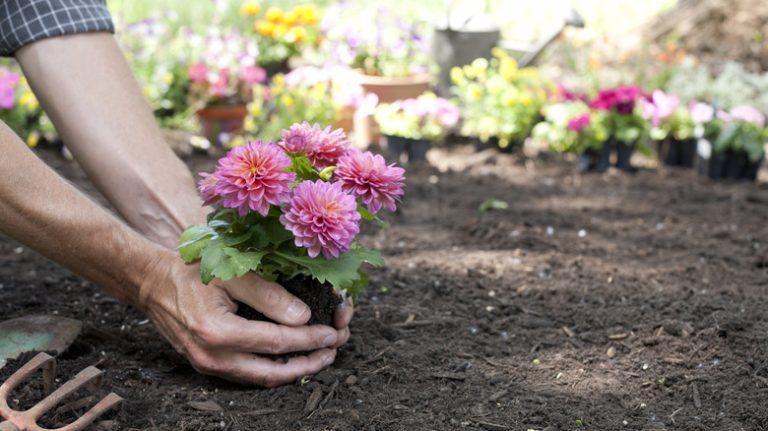The Erica Heather family, also known as Ericaceae, is a group of flowering plants that are native to various regions around the world. These plants are generally small in size, with most species reaching a height of about 35cm. One of the most popular members of this family is Erica herbacea, also known as winter-flowering heather. It is a beautiful plant that blooms in the winter, when most other plants are dormant.
Heathers are known for their careful foliage and dense habit, which makes them a popular choice for planting in sunny gardens. They have small leaves that vary in color from green to bronze, and some species have flowers that attract bees. One of the characteristics of Erica Heather is their ability to tolerate alkaline soil, which makes them accessible to gardeners in a wide range of areas.
When it comes to growing Erica Heather, it’s important to know that they prefer well-drained soil and full sun. They can be propagated through seed or by taking cuttings. Pruning is also necessary to maintain their shape and encourage blooming. In the UK, heathers are often potted and placed in the garden or on a patio, where they can be enjoyed all year round.
If you’re interested in adding Erica Heather to your garden, be sure to read up on the specific details of the species you choose. There are many different varieties to choose from, including Erica vagans, Erica terminalis, and Erica arhorea. Each species has its own unique characteristics and requirements, so make sure to do your research to ensure the best results.
Access Denied – Sucuri Website Firewall
The Sucuri Website Firewall is a security measure that prevents unauthorized access to websites. It acts as a barrier, blocking access from potentially harmful sources and ensuring the safety of the website and its visitors.
The Erica Heather family, also known as heathers, includes various species and varieties that can be grown in different regions and soil types. These heathers are native to areas like Cornwall and Dorset in England, where they have been cultivated for many years.
Heathers are evergreen perennials that thrive in well-drained soils with a light, acidic, and lime-free nature. They typically tolerate winter conditions well and can be grown in gardens or pots. The varieties within the Erica Heather family range in height, from around 35cm to eight feet, depending on the species. The leaves of these plants can have characteristics like bronze coloring.
Caring for Erica Heather involves careful planting and watering. These plants prefer well-drained and sandy soils. It is essential to avoid overwatering, as this can cause root rot. In the winter months, heathers may require some protection from frost to ensure they survive.
Propagating heathers can be done through cuttings or by dividing established plants. Taking tip cuttings in spring or early summer can result in successful propagation. It is also important to know that heathers attract bees and other pollinators, making them an attractive addition to any garden.
In conclusion, Erica Heather is a family of plants with various species and varieties that have unique growing requirements and characteristics. By understanding their care and taking the necessary precautions, you can enjoy the beauty of these evergreen perennials in your garden or pots.
Access Denied – Sucuri Website Firewall
Block details
When it comes to the Erica Heather family, there are a few key details to keep in mind. Heathers, also known as Calluna vulgaris, are popular plants that bloom during the sunny time of the year. There are different varieties of heathers, such as Erica herbacea, Erica erigena, and Erica darleyensis. These cross-leaved flowering plants are beautiful and attract bees and other pollinators.
Caring for heathers involves knowing their specific needs. For example, watering requirements can vary depending on the variety. Some heathers, like Erica mediterranea, prefer well-drained soil and should be watered less frequently. In contrast, Erica carnea and Erica vagans tolerate wetter soils and require more watering.
Another important detail is the height and spread of heathers. The most common varieties like Erica darleyensis and Calluna vulgaris can grow up to 35cm in height and spread up to 1.5 meters wide. It’s important to be mindful of their growth habits when planning their placement in your garden.
Propagation of heathers can be done through various methods, such as cuttings or seed sowing. Knowing how to propagate heathers can be helpful in expanding your collection or sharing plants with others.
When it comes to the care of heathers, they are generally low-maintenance perennials. They are hardy plants that can withstand colder temperatures and even tolerate some drought. However, they should be adequately watered during dry spells and fertilized in the spring.
If you want to know more details about heathers, please do a Google search or consult gardening resources for specific information on each variety.
It’s worth mentioning that Erica darleyensis varieties, such as Erica darleyensis ‘Bell’, ‘Bronze Beauty’, and ‘Ghost Hills’, are popular choices for their beautiful flowers and colorful foliage. They are also known to cover the ground well, making them suitable for planting in larger areas or as ground covers.
In summary, heathers are wonderful plants that add color and beauty to any garden. With proper care and attention to their specific needs, they can thrive and bring joy for many years to come.
Erica Heather family
The Erica Heather family, also known as the Ericaceae family, is a diverse group of plants that includes the popular heather plant. Heather is a flowering plant that belongs to the Ericaceae family and is native to the Mediterranean region. It is a perennial herbaceous plant that grows in clumps or blocks and has bell-shaped flowers.
There are many different varieties of heather, each with its own unique characteristics. Some common types include Erica herbacea, Erica cinerea, Erica mediterranea, and Erica vagans. These plants are known for their beautiful flowers and habit of flowering at different times throughout the year.
Heathers are usually planted in well-drained, lime-free soil and require access to full sun. They are relatively low maintenance, requiring regular watering and occasional pruning to encourage new growth. While heathers are often grown for their flowers, the foliage of these plants can also provide year-round color and cover.
One popular variety of heather is Erica arborea, also called tree heather. This variety can grow up to eight feet in height and tolerates a wide range of soil conditions. Another variety, Erica ciliaris, also known as Dorset heath, has bronze-colored flowers and is a favorite among bees. Erica tetralix, or cross-leaved heath, is another popular choice, often grown for its attractive pink flowers.
When propagating heathers, it is possible to take cuttings from existing plants and replant them in a new location. By following the appropriate planting and care instructions, heathers can be successfully grown in a variety of climates and environments.
Heather flowers are available in a wide range of colors, including shades of pink, purple, white, and red. They are often used in floral arrangements and can add a touch of natural beauty to any space. If you are considering adding heathers to your garden, be sure to research the specific variety and its requirements to ensure success.
For more details on Erica Heather family and its characteristics, you can visit websites like Shutterstock.com or consult gardening resources that provide information on the Ericaceae family.
Overall, heathers are a versatile and attractive addition to any garden or landscape. With their vibrant flowers, hardy nature, and variety of colors and forms, heathers can provide year-round interest and beauty.
Planting and Growing Erica
Light and soil requirements:
Erica, also known as heathers, is a popular plant that is native to the UK. It can tolerate a variety of soil types but prefers well-draining soil with an acidic pH. Heather plants require full sun to partial shade.
Planting:
When planting Erica in the garden, choose a spot that receives full sun or partial shade. Make sure the soil is well-draining and acidic. Dig a hole that is slightly larger than the root ball of the plant and place it in the hole. Backfill with soil and water well. Space plants about 18 inches apart to allow for proper air circulation.
Care and watering:
Heathers are low-maintenance plants that require minimal care. Water regularly during the growing season, especially in dry periods. Careful pruning can help maintain a dense and compact habit. Prune after flowering to remove spent blooms and to shape the plant if desired.
Winter care:
Most heathers are winter-hardy and can tolerate freezing temperatures. However, some winter-flowering varieties may need protection during particularly harsh winters. Mulch around the base of the plant to provide insulation and protect the roots from freezing. Another option is to cover the plants with a frost cloth or other protective material.
Available varieties:
There are many different varieties of Erica heathers available, each with its own characteristics. Some popular varieties include Erica cinerea, Erica carnea, Erica darleyensis, Erica herbacea, Erica mediterranea, and Erica tetralix. These varieties have different flower colors, foliage types, and growth habits. Cornish heath (Erica vagans) is a smart variety that is known for its bronze leaves and bright flowers.
As you can see, growing Erica heathers can be a rewarding experience. Whether you plant them in your garden or in pots, these perennials will add a splash of color and interest to your outdoor space. Just make sure to provide them with the right growing conditions and they will reward you with years of beautiful flowers.
Taking Care of Heathers
In the wide family of heathers, there are many beautiful and colourful varieties to choose from. These evergreen plants are known for their dense foliage and spreading habit, making them a popular choice for gardens. One popular variety is Erica carnea ‘Darleyensis’, a low-growing heather that reaches a height of about eight inches. It has bronze foliage and pink flowers, and it blooms from winter to early spring.
Another well-known variety is Erica x darleyensis ‘Kramers Rote’, which has deep pink flowers and blooms from late winter to early spring. This heather grows to be about 35cm in height and has a dense habit. Erica cinerea ‘Purple Beauty’ is another winter-flowering heather that has purple flowers and lime-free foliage. It grows to be about 30cm in height and is well-suited for alkaline soils.
When caring for heathers, it is important to provide them with well-drained soil and a sunny location. Most heathers prefer acidic soil, so if your soil is alkaline, you may need to amend it with lime-free compost. Watering is also important, especially during dry spells. It is best to water heathers deeply and infrequently, rather than giving them frequent shallow waterings.
If you are growing heathers in pots, be careful not to overwater them. Potted heathers should be watered when the top inch of soil feels dry to the touch. In the winter, it is important to protect heathers from frost. You can cover them with a layer of straw or fleece to keep them warm.
To learn more about caring for heathers and to find specific details about each variety, you can visit the Erica Heather Family website or do a Google search. The website has a wealth of information about the characteristics and care of each heather variety.
| Variety | Flowering Time | Height | Characteristics |
|---|---|---|---|
| Erica carnea ‘Darleyensis’ | Winter to early spring | About 8 inches | Bronze foliage, pink flowers |
| Erica x darleyensis ‘Kramers Rote’ | Late winter to early spring | About 35cm | Deep pink flowers |
| Erica cinerea ‘Purple Beauty’ | Winter | About 30cm | Purple flowers, lime-free foliage |



